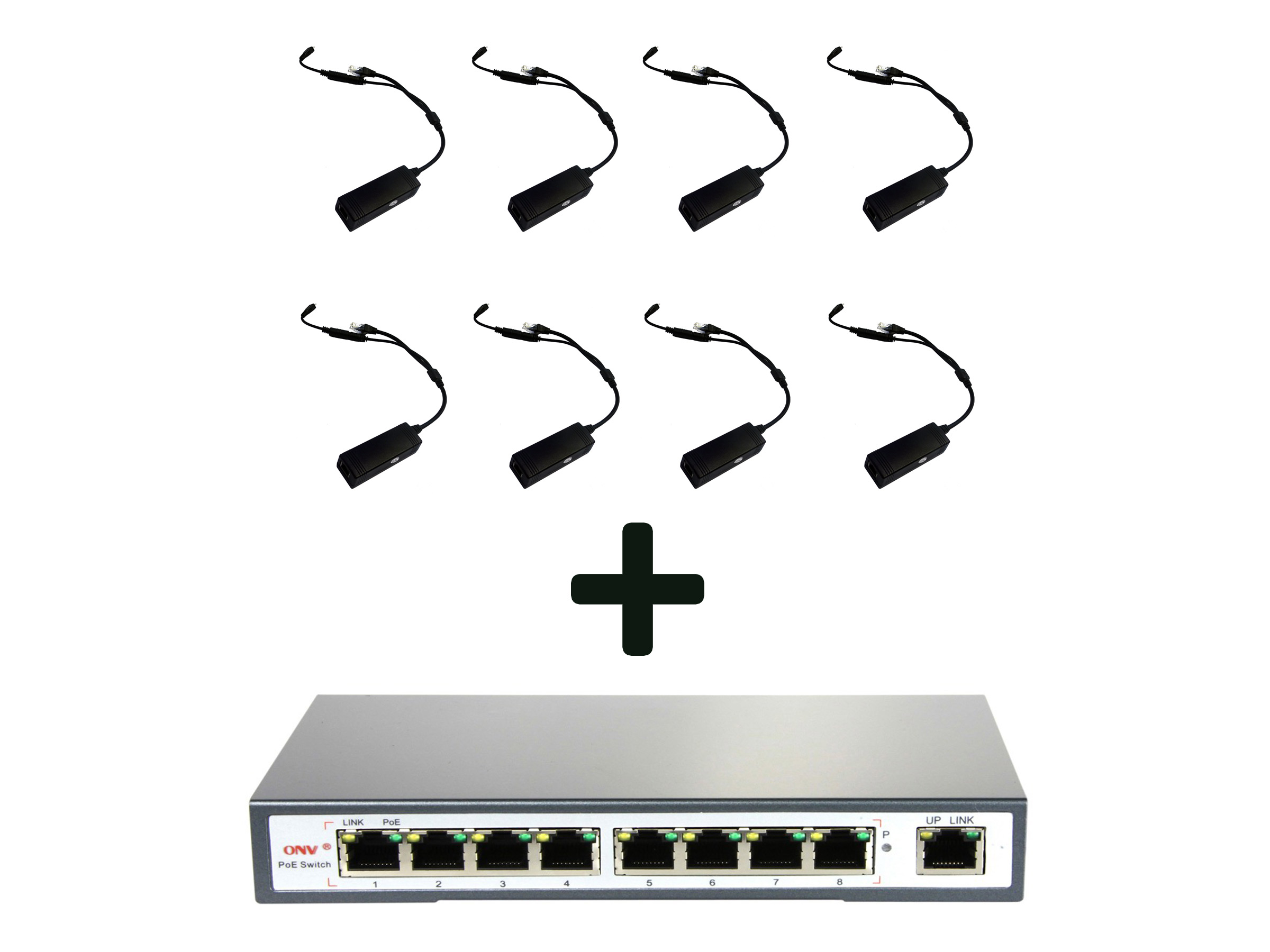IEEE802.3af Power-over-Ethernet
main characteristics:
• official Power-over-Ethernet standard
• requires compliant PoE switch or similar equipment to supply power
• auto-detects presence of PoE equipment, only supplying power if needed
• can support up to 1000Mbit/s (Gigabit Ethernet)
• supports distances up to 100 meters / 328 feet
IEEE802.3af
IEEE 802.3af is the official Power-over-Ethernet standard. It transmits power at a fixed 48V/15.4W which is then converted into the appropriate voltage by an 802.3af compliant device or splitter. To supply power in these setups you need either an 'end-span' unit, such as a PoE switch (most common), or a 'mid-span' unit (also called a mid-span injector). Both provide power in a compliant way, yet an end-span unit typically does this using 'mode A', while mid-spans often use 'mode B' (modes explained below). Endspans function as a switch, while midspans only 'inject' power. A midspan therefore will have a corresponding data input for each data output, while an endspan requires only a single input (uplink) and at the same time can have an arbitrary number of outputs.Mode A & B
There are two different 'modes' defined in the 802.3af standard. Mode A uses the data wires to transmit power, which is done by applying a common-mode voltage to each pair. Mode B uses the 'spare' wires to transmit power. Mode B is therefore similar to passive PoE, with the difference that here a standardized voltage and power are used and are supplied only when a compliant device is detected. Note that due to their nature mode A can support Gigabit Ethernet, while mode B is limited to 10/100M. Compliant end-devices and splitters should always support both modes so the mode is more important when chosing a power supply.802.3af Splitter
Some devices, such as IP cameras, support 802.3af Power-over-Ethernet out-of-the-box. In such cases you only need a compliant PoE switch to supply the power. For other devices that do not support PoE by default, such as the Raspberry Pi, you can use a compliant PoE splitter. The splitter triggers the PoE switch to supply power and converts the supplied power to the appropriate power for the device. For micro-USB powered devices such as the Raspberry Pi this is 5V/10W.related products

from €17,50
Raspberry Pi/micro-USB PoE splitter/adapter (IEEE802.3af)

from €77,25
Raspberry Pi/micro-USB PoE kit (power up to 4 Pi's)

from €115,-
Raspberry Pi/micro-USB PoE kit XL (power up to 8 Pi's)
